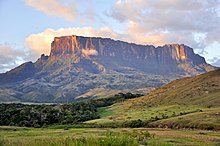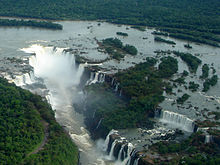National Park
A national park is a category of protected area that enjoys a certain legal status that requires the protection and conservation of its rich flora and fauna. It is characterized by being representative of a phytozoogeographic region and having an interest in science and tourism.
History
Although the concept of national parks is of recent appearance in the Western world, the first efforts to keep large tracts of land under state control for nature protection purposes can be found in Asia. [citation needed] Perhaps the oldest known protected area[citation needed] is the Sinharaja Forest in Sri Lanka, which is today a forest reserve and in 1988 was declared a World Heritage Site by Unesco.
Years later, a similar measure was proposed for an area in Wyoming and Montana, but problems with tourists and landowners in and around the newly created Yosemite park, plus the fact that this proposed new reserve covered areas in more than one state, made it difficult to set up initially as the federal government had no precedent and no clear idea of how to control a park. In 1871 Yellowstone National Park was established as the first truly national park. Taking the example of Yellowstone, in 1890, Yosemite passed to federal control becoming the second national park in the United States of America. The second national park in the world was the Royal National Park in Australia.
It was not until May 24, 1909 that the first national park in Europe was created, a merit achieved by Sweden thanks to the approval of a law that allowed the immediate protection of nine large natural spaces: Abisko, Garphyttan, Hamra, Pieljekaise, Sarek, Great Falls, Sånfjället, Ängsö and Gotska Sandön.
Spain established its first national park, the Picos de Europa, in 1918. Chile protected its first park in 1926, the Vicente Pérez Rosales National Park. Argentina created its first national park in 1934, the Nahuel Huapi National Park, and Brazil its own in 1937, the Itatiaia National Park.
Development of the concept
International parks are generally located in underdeveloped areas. They frequently present areas with an exceptional and almost virgin richness in their flora and fauna with an ecosystem that is often the last stronghold of endangered species. International parks are also developed in areas of significant geological characteristics due to their origin, formation or natural beauty. Very often both objectives are satisfied in a large part of the international parks, in a unique natural balance that allows enjoying natural life in its greatest splendor as it abounded on our planet before excessive human development.
In some countries, national parks are intended to return certain areas that have experienced such human development to their natural state. This was the case with the Great Smokey National Park located between the states of North Carolina and Kentucky. Also in some cases, such as in Great Britain, international parks may include private properties where agriculture can continue and there are small towns and public roads.
Most of the international parks have a dual purpose of offering refuge to wildlife and also as a tourist attraction, thus giving rise to what is known as ecotourism. Controlled tourism is a source of income for the maintenance of the parks.
Contenido relacionado
Sauropsida
Colombia's shield
Mesopotamia






